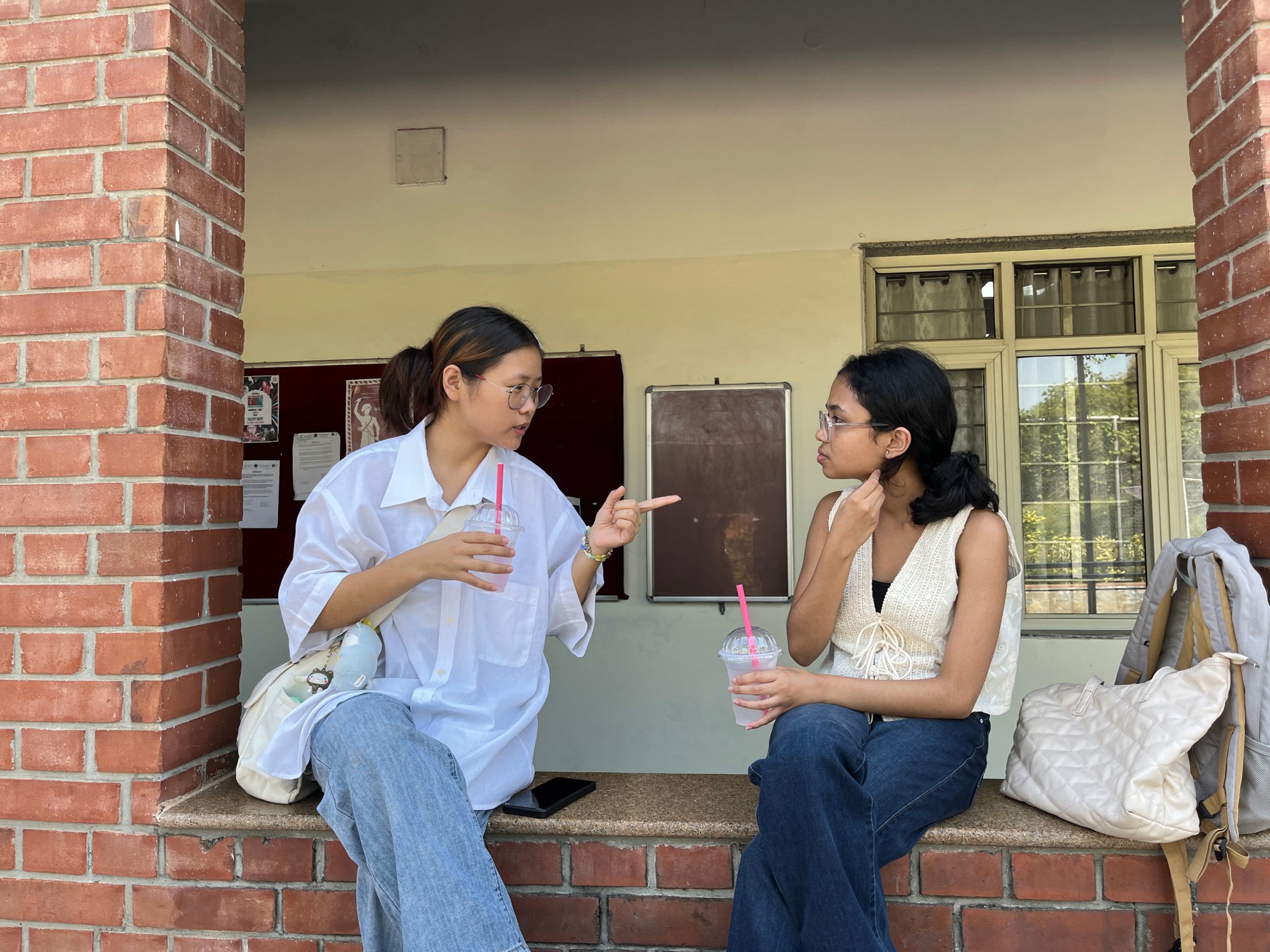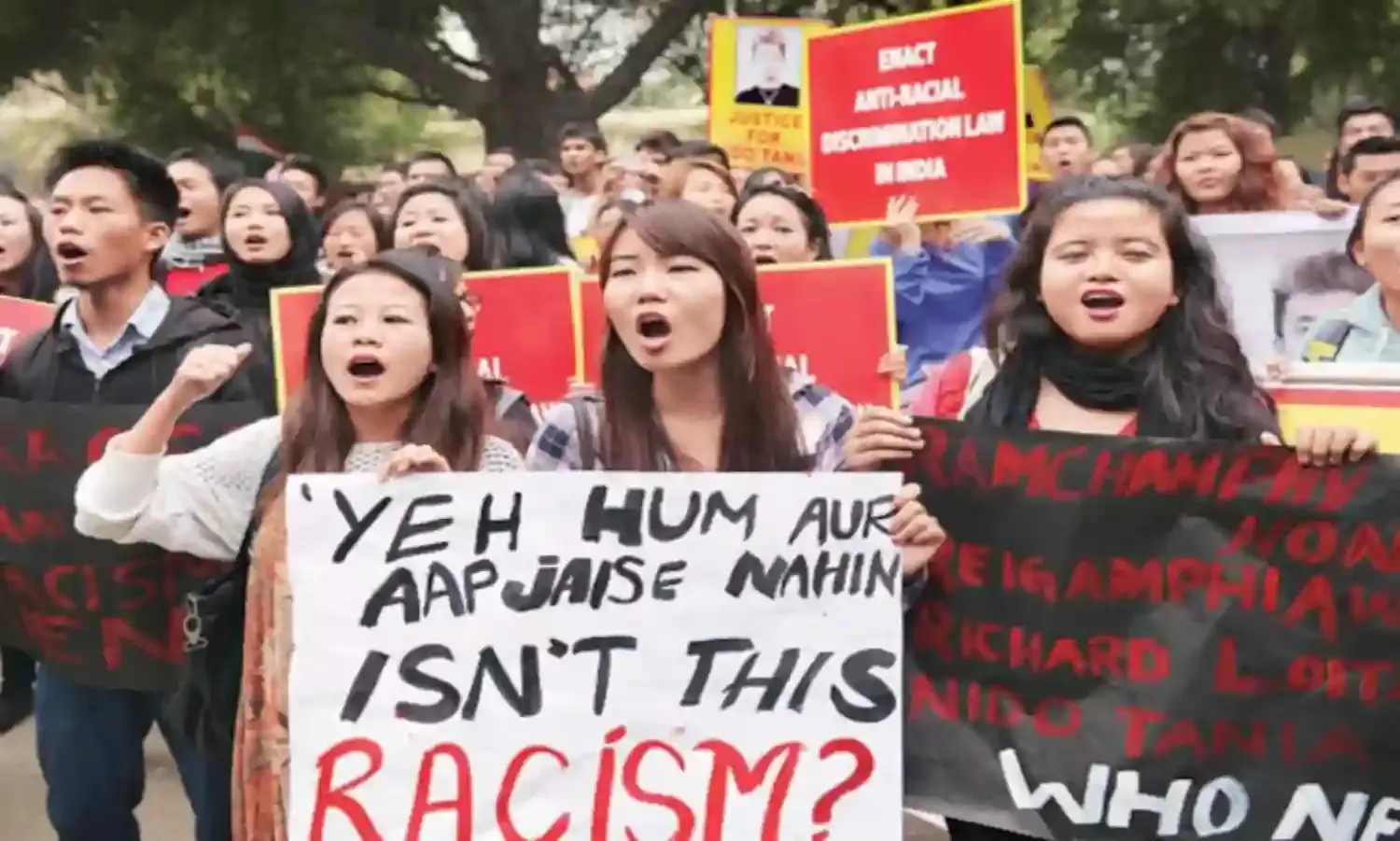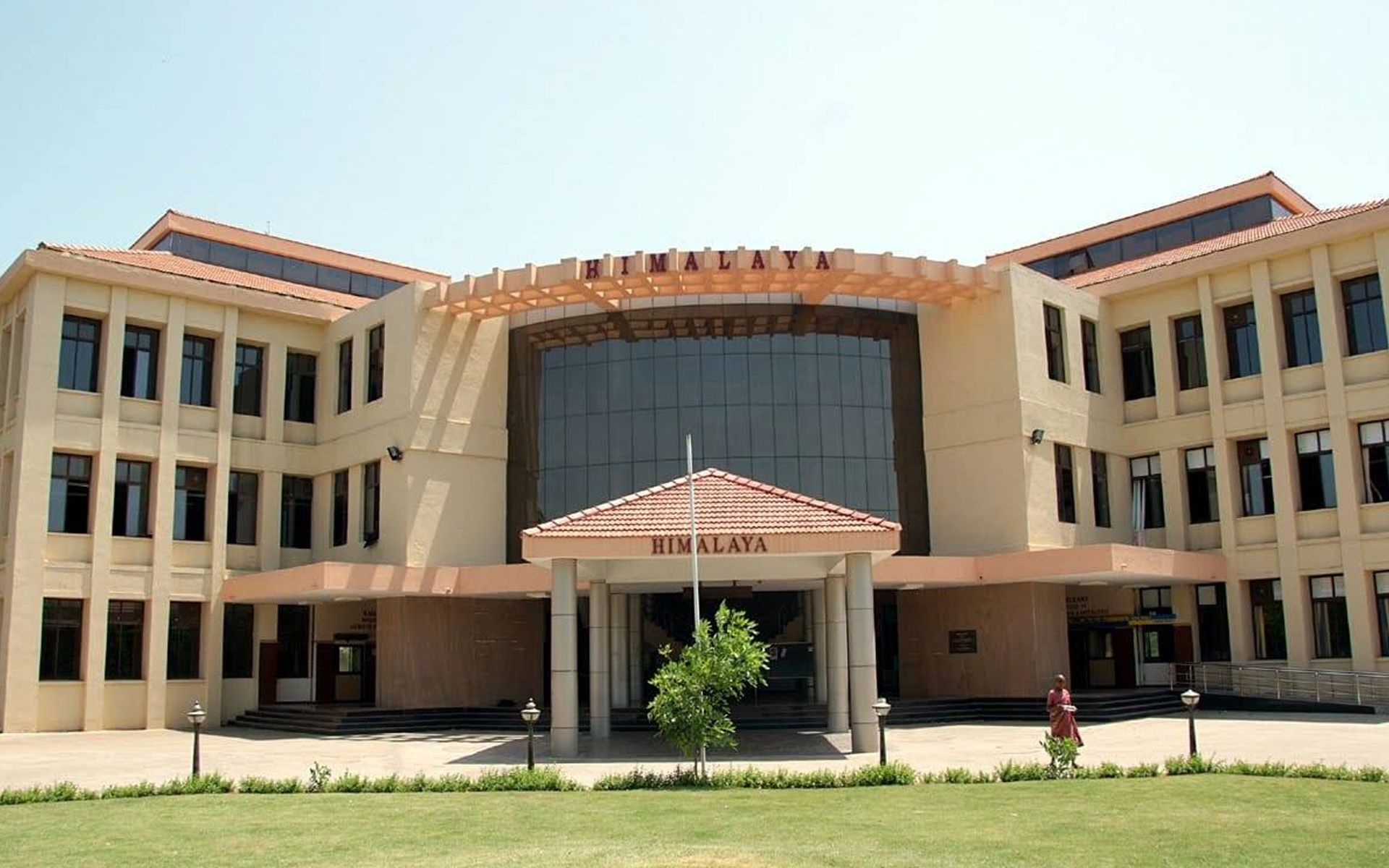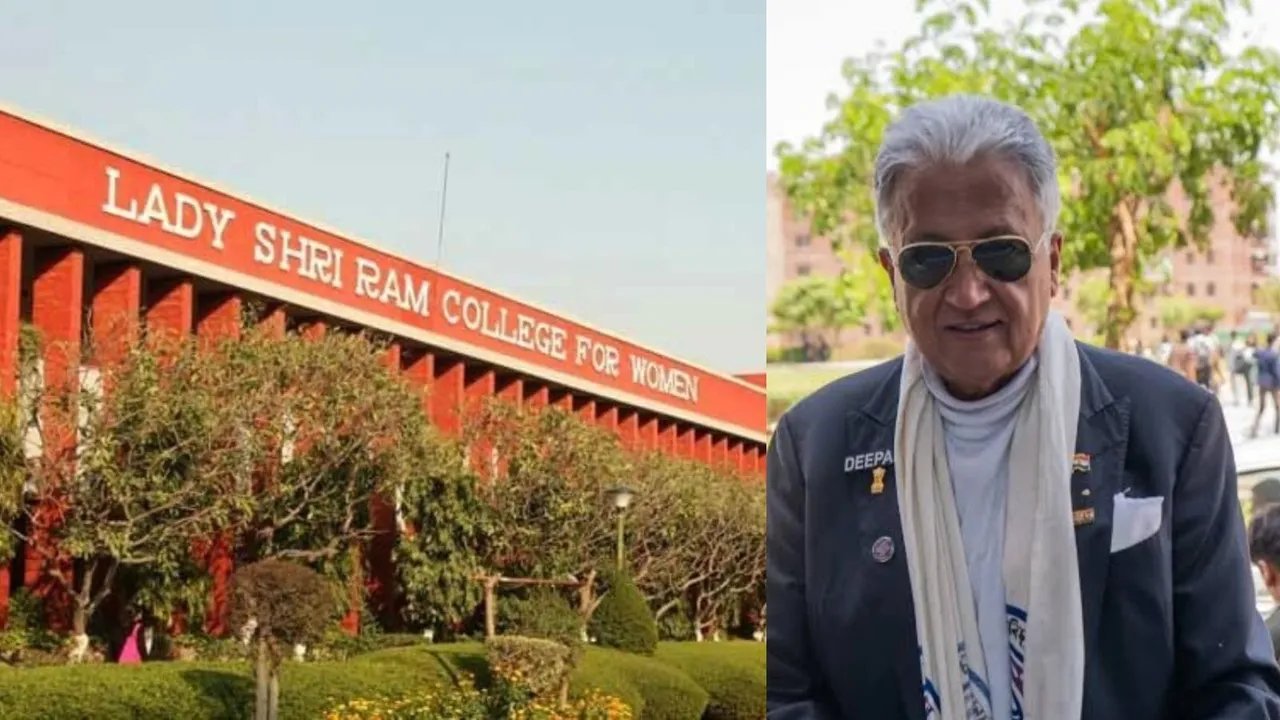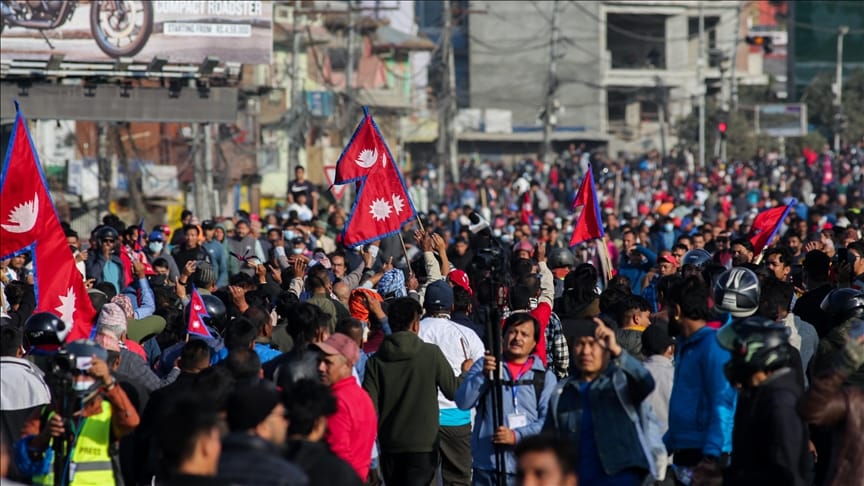Delhi, the national capital of India, is often celebrated as “Dilwalon ki Dilli.” With its reputation for being welcoming and warm, Delhi attracts thousands of young people from the Northeast each year, who migrate to the city in search of quality education and better employment opportunities. Yet, the city has witnessed a string of racial attacks and abuses in recent years and attacks rooted not merely in xenophobia, but also in race, gender, and cultural prejudice.
For Northeastern people, especially women, Delhi becomes a space where racism, sexism, and cultural alienation converge. Safety, dignity, and freedom are constantly negotiated often at a cost. This report draws from the testimonies of students, professionals, and workers from the Northeast to explore their everyday realities and ask: how safe is the national capital for Northeastern people, especially women?
Everyday racism and racial slurs
Racism against Northeastern people in Delhi often begins early, with children facing taunts in schools, and carries forward into adulthood through casual slurs and stereotypes, manifesting in derogatory terms like “Chinese,” “momo,” “ch*nk,” or “dog eater.” On campuses, students are often mocked for their appearance, language, or food habits, while outside, they are reduced to caricatures through mocking nicknames and stereotypes. In employment spaces too, these biases translate into discrimination and limited opportunities.
An Arunachali woman who’s been residing in Delhi for years describes how exhausting it is to confront such remarks: ‘I just give up [when I hear those remarks]. I mean, how ignorant do you have to be? I’ve even heard China remarks from people who’ve literally completed [Bachelors-level] education.’ She adds that she always speaks in “shudh” Hindi with shopkeepers and auto drivers so that they don’t overcharge her.
For Lallawmzuala, a Mizo student, the experience has been equally frustrating. ‘I have been called ‘ch*nky,’ ‘momos,’ etc., as a passing remark by people. Not directly to my face but as I walk by, they would snicker and smile amongst themselves saying ch*nky ch*nky.’ Beyond slurs, he also points to the indifference of shopkeepers: ‘I would ask them if they have something or the price of something, and they would act like I’m not there. Even if I spoke perfect Hindi and no one else was around, they’d just keep quiet.’
In a more violent form, multiple cases of racial attack towards Northeastern people, including physical violence, rape, and murder have been reported in the city for years, continuing even to the present day.
In a more violent form, multiple cases of racial attack towards Northeastern people, including physical violence, rape, and murder have been reported in the city for years, continuing even to the present day. In 2025, Northeastern communities in Delhi faced repeated racial violence, including the mob attack on a “North East Shop” owner in Vijay Nagar, molestation by a Police personnel and the stabbing of two Manipuri students by bike-borne men.
Fetishisation of Northeastern women
There is an increasingly troubling mix of exoticisation and sexualisation being reported which Northeastern women face in the capital, making them more vulnerable to harassment. Their physical appearance, clothing choices, and social habits are often used to stereotype them as “easy” targets for men, leading to unwanted attention and assumptions which often turn dangerous.
Hazel Nongmeikapam, a Manipuri student who has spent nearly eight years in the capital, says ‘Having lived here for a good amount of years, a sense of hyper vigilance developed in me. Even when I’m surrounded by people, my mind is subconsciously aware of what is happening around me, and that shows the image of how safe a Northeastern woman feels in the city.’
On speaking about the perception of Northeastern women in Delhi, a Meghalayan woman recalls an encounter with an auto driver near the NCC Gate in Safdarjung, a neighbourhood known for its large Northeastern diaspora. The driver went on a rant about how ‘all [you] do is party, drink, and do drugs,‘ and indirectly linked them to prostitution. In another incident, a student from Manipur told FII about being followed by a non-Northeastern man in Delhi with the request of ‘spending the night‘ with him.

This fetishisation also visible in how Northeastern women are sought out in the job market. A shop in Sarojini Nagar, perhaps Delhi’s most famous shopping hub, had put up a notice reading ‘Northeastern Salesgirl Wanted.’ When questioned, a male employee casually explained that it was because they are ‘beautiful and cute,’ reducing an entire race and gender to mere aesthetics, while disregarding their skills.
Soumya Sinha, who formerly worked at CREA as an Emerging Leader tells FII about how Northeastern women’s issues are often overlooked within Delhi-based feminist circles. She says, ‘There’s an elitism in these spaces that we can’t ignore: these platforms and networks are far more accessible to urban, English-speaking women, and the issues that gain traction are usually those that resonate with the northern urban belt. So when issues of fetishisation and sexualisation of Northeastern women are raised, it is either assumed that north-east-led groups/collectives bear the responsibility of addressing them, or they are treated as “add-ons” to broader conversations on gender and safety.‘
Food, prejudice, and the housing barrier
Northeastern residents in Delhi often face persistent scrutiny over cultural markers that set them apart. Even in everyday spaces, they frequently feel under observation, with their food habits becoming targets of constant cultural policing fueled by stereotypes and racism, which many-a-times leads to being denied accommodation.
Even in everyday spaces, they frequently feel under observation, with their food habits becoming targets of constant cultural policing fueled by stereotypes and racism, which many-a-times leads to being denied accommodation.
When asked about some common complaints from Northeastern students about safety and discrimination in Delhi, Pragya Kashyap from Assam – who formerly served as the President of North East Cell, Hansraj College, DU – says, ‘A major area where this prejudice appears is in finding accommodation. The problem is so widespread that it has led to the creation of rental accommodations specifically for Northeastern students near universities. In mainstream housing, students often face higher rents, mistreatment for not speaking Hindi, and negativity towards their traditional food, which is wrongly seen as strange or offensive.’

Lalchhanhimi, who’s a Mizo student, recalls a bitter memory from her girls’ PG accommodation when she brought bamboo shoot and other non-vegetarian pickles from home so she could ‘stomach the tasteless PG food.‘ She shares, ‘There was this one girl who was shouting in the corridor that I couldn’t put the pickles in the shared fridge of the PG [accommodation.]‘ A few days later, she found the pickle jar smashed.
Nyasum Ete, who’s an Arunachali student currently pursuing a Master’s degree at JNU tells FII that she felt judged by her PG roommates for her food habits during her undergraduate days in Delhi, ‘They never said anything directly but casually through small remarks or expressions, I could sense it. It wasn’t anything harsh but it did make me more aware of how different my food choices were.‘ She also adds that she has heard stories of Northeastern students being denied flats because of stereotypes.
Safety within the community bubble
For many Northeastern students and employees in Delhi, safety and comfort often come from staying within their own community “bubble” – they prefer to live and work in neighbourhoods with a strong Northeastern presence.
Ultimately, most Northeastern people do not see Delhi as a place to settle long term.
Zonunpuii, who works at a small eatery in Safdarjung, shared that her experience has been largely positive: ‘All my customers have been friendly so far, and since my employer is also from the Northeast, I haven’t had to face stereotypes or comments.‘ Yet she admits she has not considered working elsewhere, nor does she plan to.

Nyasum also tells FII ‘The solidarity among Northeastern students in Delhi is very real, and it definitely makes the city feel safer. We look out for each other, whether it’s through student organisations, informal networks, or just friendship.’
Ultimately, most Northeastern people do not see Delhi as a place to settle long term. As Hazel notes, ‘One thing that would make me feel more secure in living here long term would be representation. I would want more bodies for NE people in Delhi, whether it is working spaces, educational and public spaces like hospitals. For example, the NE cell in Delhi Police at least is a good start to it.‘
Breaking stereotypes about Northeastern people
Discrimination and racism deeply affect the everyday lives of Northeastern people in Delhi. Ms. Soshomi Makang, Assistant Professor in the Department of Psychology at Aryabhatta College, University of Delhi, explains that casual racism, through food jokes, mocking appearances, or mispronouncing names, can take a toll on their mental health.
Northeastern people demand that their identities, cultures, and experiences be respected without being reduced to stereotypes or slurs.
She tells FII, ‘Racism and sexism are frequently encountered in areas where [Northeastern students] reside. The impact [on their mental health] can range from experience of distress, anger, rage, shame, sense of disregard, objectification of body, lack of trust, and resistant to assimilate and integrate with the host culture.‘

Ms. Makang stresses that dismantling the stereotypes and racism faced by Northeastern people requires both top-down and bottom-up approaches. She highlights the need to revise school textbooks so that they better represent the Northeast and its histories, as well as to pursue development models that align with the region’s natural ethos rather than imposing ones that uproot traditions. She also adds, ‘Learning effective communication skills is very practical in building relationships, and this will aid in sharing ideas. Development of different artforms of Northeast can [also] change the image of the region.’
Northeastern people demand that their identities, cultures, and experiences be respected without being reduced to stereotypes or slurs. For Delhi to truly be inclusive, it must commit to dismantling everyday racism through systemic reform, education, and empathy.
About the author(s)
Mema is currently a Master's student at South Asian University (SAU). Hailing from Manipur, her lived experiences there have shaped a deep commitment to the feminist cause. She cares deeply about women and their future, which she tries to convey with her writing. She finds joy in reading, writing and cooking.
